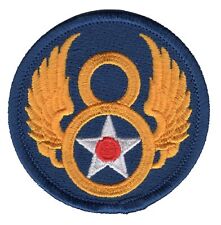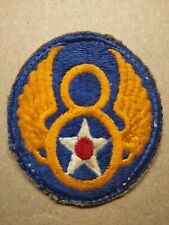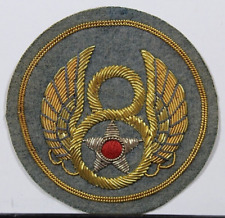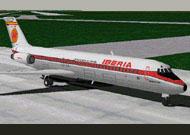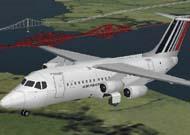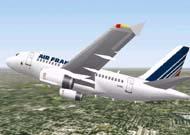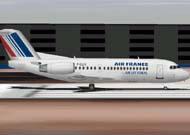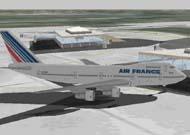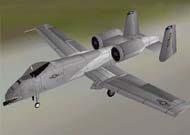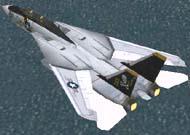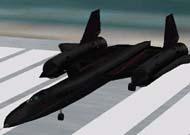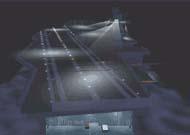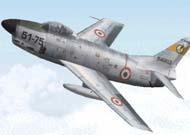When you click on links to various merchants on this site and make a purchase, this can result in this site earning a commission. Affiliate programs and affiliations include, but are not limited to, the eBay Partner Network.
Up for sale "Eigth Air Force" Ira Eaker Flown/Signed LE 763/1520 Cover. This sale includes a RARE! 3.5X5.5 Portrait photo.
ES-9146E
General Ira Clarence Eaker (April 13, 1896 – August 6, 1987) was a general of the United States Army Air
Forces during World War II. Eaker, as second-in-command of the
prospective Eighth Air Force, was sent
to England to form and organize its bomber command. While he struggled to build
up airpower in England, the organization of the Army Air Forces evolved and he
was named commander of the Eighth Air Force on December 1, 1942. Although his
background was in single-engine fighter aircraft, Eaker became the architect of a strategic
bombing force that ultimately numbered forty groups of 60 heavy
bombers each, supported by a subordinate fighter command of 1,500 aircraft,
most of which was in place by the time he relinquished command at the start of
1944. Eaker then took overall command of four Allied air forces based of Operations, and by the end of World War II had been named
Deputy Commander of the U.S. Army Air Forces. He worked in the aerospace industry following
his retirement from the military, then became a newspaper columnist. aker was born in Field Creek, Texas, in 1896, the son of a Dutch tenant farmer. He attended Southeastern
State Teachers College in Durant, Oklahoma, and then joined the United States Army in
1917. He was appointed a second Reserve Corps,
and assigned to active duty with the 64th
Infantry Regiment at Camp Bliss, El Paso, Texas. The 64th Infantry was assigned to the 14th
Infantry Brigade on December 20, 1917, to be part of the 7th Infantry
Division when it deployed to France. On November 15, 1917,
Eaker received a commission in the Regular Army.
He later received a Bachelor of Arts degree in journalism from the University of Southern
California in 1934. Eaker remained with the 64th Infantry until
March 1918, when he was placed on detached service to receive flying
instruction at Austin and Kelly Fields in Texas.
Upon graduation the following October, he was rated a pilot and assigned to Rockwell Field, California. In July 1919, he transferred to the Philippine Islands, where
he served with the 2d Aero Squadron at Fort Mills until September 1919; with the 3d Aero Squadron at Camp Stotsenburg until September 1920, and as executive
officer of the Department Air Office, Department and Assistant Department Air
Officer, Philippine Department, and in command of the Philippine Air Depot
at Manila until September 1921. Meanwhile, on July 1, 1920,
he was commissioned into the Regular Army as a captain in the Air Service and
returned to the United States in January 1922, for duty at Mitchel Field, New York, where he commanded the 5th Aero Squadron and later was post adjutant. In June
1924, Eaker was named executive assistant in the Office of Air Service at Washington, D.C., and from December 21, 1926, to May 2, 1927,
he served as a pilot of one of the Loening OA-1 float planes of the Pan American Goodwill
Flight that made a 22,000 mile (35,200 km) trip around South America and,
with the others, was awarded the Mackay Trophy. He then became executive officer in the Office
of the Assistant Secretary of War at
Washington, D.C. In September 1926, he was named operations and line
maintenance officer at Bolling Field, Washington,
D.C. While on that duty, he participated as chief pilot on the endurance flight
of the Army plane, Question Mark,
from 1 to January 7, 1929, establishing a new world flight endurance record.
For this achievement the entire crew of five, including Eaker and mission
commander Major Carl Spaatz, were awarded
the DFC.
In 1930, he made the first transcontinental flight entirely with instruments. In
October 1934, Eaker was ordered to duty at March Field, Calif., where
he commanded the 34th Pursuit Squadron and later the 17th Pursuit Squadron. In
the summer of 1935, he was detached for duty with the Navy and participated
aboard the aircraft carrier USS Lexington,
on maneuvers in Hawaii and Guam. Eaker entered the Air Corps Tactical
School at Maxwell Field, Alabama, in August 1935, and upon graduation the following
June entered the Command and General Staff
School at Fort Leavenworth, Kansas, from which he graduated in June 1937. During his time
at Ft Leavenworth from June 3–7, 1936, Eaker made the first blind (instruments
only) transcontinental flight from New York to Los Angeles.[2] He then became assistant chief of the
Information Division in the Office of the Chief of Air Corps (OCAC) at
Washington, D.C., during which he helped plan and publicize the interception of the Italian
liner Rex at sea. In November 1940, Eaker was given
command of the 20th Pursuit Group at Hamilton Field,
California. He was promoted in 1941 to colonel while at
Hamilton Field.




